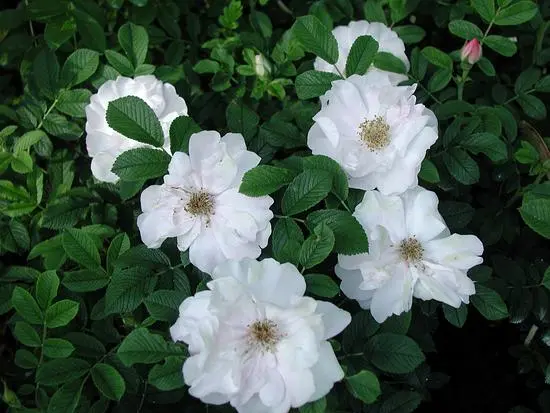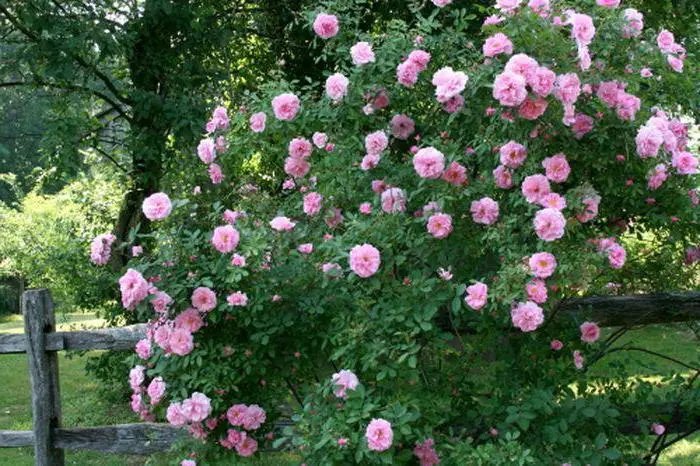Growing roses in regions with cold and long winters is rarely successful due to the low winter hardiness of the plants. This problem is relevant for flower growers in many countries, but Canadian breeders managed to solve it in the last century by breeding special frost-resistant varieties. Canadian roses perfectly tolerate winter without shelter, are completely unpretentious in care and can grow even in the harshest climate, delighting with their lush and long flowering.
Reproduction
Canadian roses are propagated by cuttings, which are cut from young, but fully formed shoots in the middle of summer. It is desirable that the blanks reach a length of 25-30 cm – such cuttings take root faster, since, immersed deep in the ground, they absorb useful substances better. To make the cutting easier to deepen, its lower cut should be made at an angle. Roses of Canadian varieties are extremely tenacious, so cuttings can be safely planted immediately in a permanent place, without worrying about temperature and humidity, as when growing cuttings of ordinary garden roses.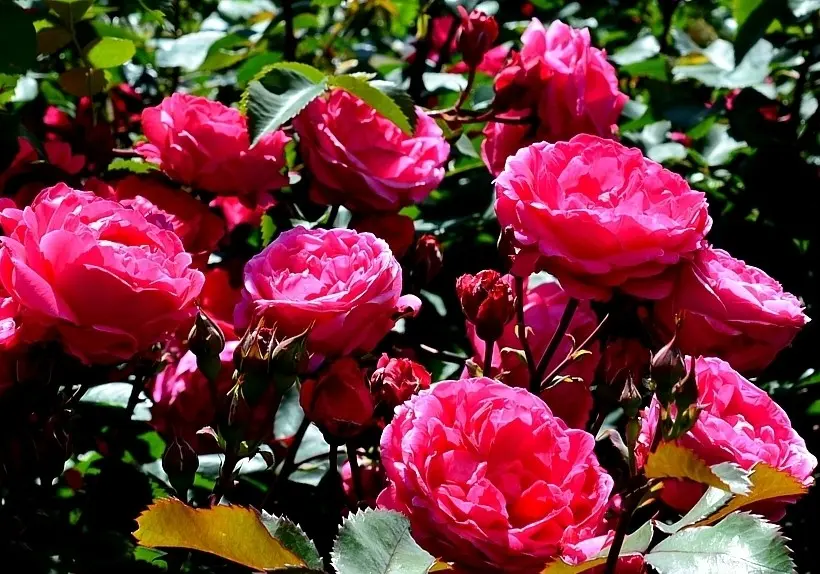
For successful rooting, cuttings must be prepared and properly planted.
All leaves, with the exception of the top two, should be removed, and the cuttings themselves should be immersed for several hours in a solution that stimulates root growth. This measure is not mandatory, but it speeds up the process of rooting seedlings.
The soil before planting the cuttings is dug up and fertilized with organic matter (compost, peat). Then the cuttings are dug into the ground at a slight slope.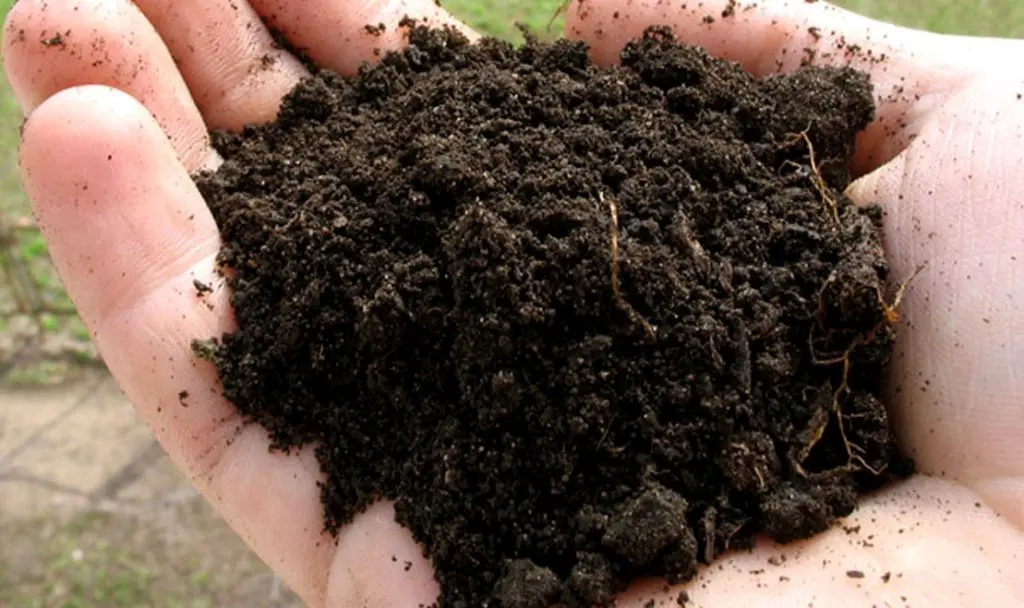
The distance between seedlings depends on the variety of roses. Tall and voluminous shrubs growing up to 1,5-2 m are recommended to be planted no closer than 1 m from each other. Roses of medium height (1-1,5 m) are planted at a distance of 50-60 cm, and low ones (up to 1 m) at a distance of 35-40 cm. After digging in, the cuttings should be watered abundantly and covered with cut plastic bottles or jars. So that the seedlings do not overheat, they should be shaded, or dark bottles should be used. Although the cuttings will take root by autumn, the shelter can be removed only next spring.
Video “Description”
From the video you will learn what these flowers are.
Care
Canadian roses can grow in any conditions and with minimal care. They perfectly tolerate drought and summer heat; moreover, sunny areas are preferable to them than shade. However, they grow quite successfully in the shade. Roses are undemanding to the composition of the soil, but they gratefully respond to periodic top dressing with violent growth of shoots and lush flowering. For top dressing, it is better to use liquid fertilizers (mineral mixtures, mullein, ash solution), which are introduced into small depressions around the bush. In a severe drought, plants need to be watered.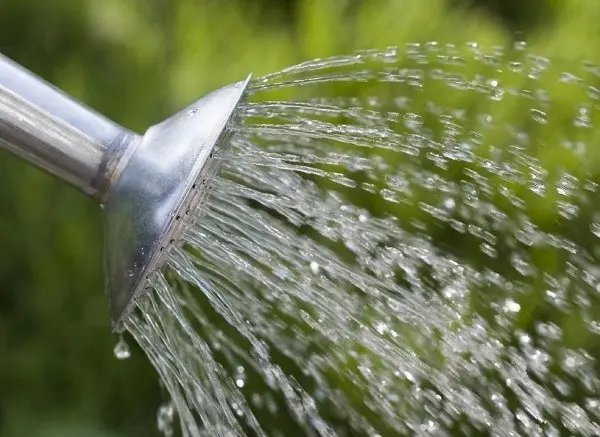
Pruning for Canadian roses is not required, but it is desirable for ampelous varieties, as it allows not only to rejuvenate the bush, but also to give it a well-groomed appearance.
Sanitary pruning is carried out in the spring, before bud break, and consists in the complete removal of diseased and damaged lashes, as well as shortening some tops. Then, throughout the summer, faded buds must be removed. In autumn, pruning can be omitted, since roses normally tolerate low temperatures and do not need shelter.
Advantages of a flower
The main advantage of Canadian selection roses, no doubt, is their unique winter hardiness. Plants are able to withstand frosts of -30-45°C, while tea hybrids freeze already at a temperature of -10°C. The level of winter hardiness of these roses may vary depending on the variety, but even if for some reason (a sharp temperature drop) the stems are frozen, they will quickly recover with the advent of heat. This ability to recover is due to the growth of plants on their own roots – that is, new shoots grow from root buds.
It is also important to note the high immunity of plants to various diseases of fungal and infectious origin. Also, roses of this selection almost never suffer from parasites and harmful insects, which eliminates the need for seasonal and preventive treatments. They may well do without the measures that are mandatory for tea varieties: watering, pruning, special top dressing, and this will not affect their flowering in any way.
It is impossible not to note the high decorative properties of roses. The bushes of these plants are distinguished by lush and bright greenery, small thorns and multiple bright inflorescences. The duration of rose bloom is also impressive (from the end of June until the very frosts), as well as the variety of color shades that make it possible to bring bright colors into the landscape space.
Varieties of varieties
Canadian roses are quite difficult to classify, as they were bred with the participation of many specific and hybrid forms. Since the main goal of this selection was to obtain the most hardy and winter-hardy roses, Cordes and Rugosa hybrids were chosen as mother varieties, which were then crossed with local species common in Canada. Today you can find on sale a huge number of varieties of “Canadians” of various foreign origins, for example, American. But only two series obtained as a result of many years of government programs belong to exclusively Canadian roses: Explorer and Parkland.
Roses of the Explorer series (pioneer, explorer) are very resistant to low temperatures and diseases, bloom for a long time and luxuriantly. This series includes more than two dozen varieties with completely different characteristics: ampelous, weaving, strong-smelling varieties. The Parkland series (park) was created a little later, and includes a dozen and a half upright varieties with elegant double flowers of various colors. The series was created in the Canadian town of Morden, and therefore almost all Parkland variety names begin with the word “Morden”. The winter hardiness of these roses is not so high, but they recover extremely quickly after freezing.
Of course, it is not possible to describe all varieties of Canadian selection, so we will choose the most popular and most often planted in summer cottages:
- Henry Hudson (Explorer series). Selection of 1976. Low (90-100 cm), compact shrub rose with medium size (5-7 cm) white or slightly pinkish flowers. It blooms in waves throughout the summer, tolerates shade well, is an excellent option for decorating small flower beds, the front part of the territory.

- JPConnell (Explorer). The variety was bred in 1987. The bush is vigorous (up to 1,5 m), erect, with luxurious bright green large leaves, and no less spectacular double flowers of light yellow color. The rose grows slowly, blooms once for the first couple of years, but as the bush grows, flowering becomes repeated. This variety is most often used to decorate parks, alleys, flower beds.
- Morden Blush (Parkland). The most popular and profusely blooming rose of this series, bred in 1988. The bush is compact (up to 1 m in height and width), medium-sized flowers (5-6 cm), terry, collected in inflorescences of several pieces. The color of the petals is pale pink or cream, in the center of the flower is rich pink, the aroma is light. Canadian roses of this variety keep their shape for a long time, resistant to heat, cold and disease.

- Morden Amorette (Parkland). Selection of 1977. The shortest variety of this series – in a warm climate, the height of the bushes can reach 90 cm, but in a cold climate it does not exceed 30-40 cm. The bush is compact, the flowers are large (6-7 cm), strongly smelling, rich dark pink or purple with a slight light spotting. Grows well in dry and hot climates.
- Charles Albanel (Explorer). The most common variety in summer cottages. The bush is compact, undersized (up to 75 cm), fuchsia-colored flowers, strongly smelling. The shoots are flexible, able to create a dense shelter, which allows the rose to be used as a ground cover.

Among the Explorer series there are interesting varieties with ampelous shoots up to 3 m high (Martin Frobisher, William Baffin), as well as the early flowering rose Therese Bugnet, the flowers of which bloom in May. Whichever roses you choose, you can be sure that in any climate there will be no difficulties with their cultivation, except for one, the choice of the variety itself, since the variety of Canadian roses will not leave anyone indifferent.
Video “Care”
From the video you will learn how to properly care for roses.










